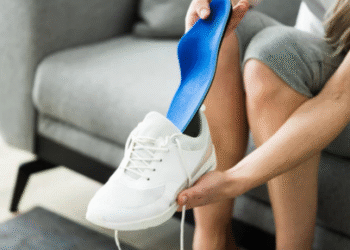1. Understanding Sunlight-Induced Skin Allergies
Sunlight-induced skin allergies, also known as photosensitivity, occur when the skin reacts abnormally to sun exposure. This can cause itching, redness, and rashes. These reactions can be triggered by both natural sunlight and artificial UV light sources.
2. Common Symptoms of Sunlight Allergies
Symptoms of sunlight-induced skin allergies include itching, redness, and the appearance of small bumps or blisters. These symptoms usually appear on areas of the skin that have been exposed to the sun, such as the face, neck, and arms.
3. Polymorphous Light Eruption (PMLE)
Polymorphous Light Eruption (PMLE) is the most common form of sunlight-induced skin allergy. It typically occurs in the spring and early summer and is characterized by an itchy rash that develops a few hours to days after sun exposure.
4. Solar Urticaria: A Rare Condition
Solar urticaria is a rare type of sunlight-induced skin allergy that causes hives to develop within minutes of sun exposure. The hives can be itchy and uncomfortable but usually subside within a few hours after avoiding further sun exposure.
5. Photoallergic Reaction: Chemical Sensitivity
Photoallergic reactions occur when a chemical applied to the skin reacts with sunlight, causing an allergic reaction. Common culprits include certain sunscreens, fragrances, and medications. Symptoms can include redness, itching, and blistering.
6. Phototoxic Reaction: Direct Damage
Phototoxic reactions are caused by the direct damage of skin cells by sunlight after applying certain chemicals or taking specific medications. This can result in severe sunburn-like symptoms, including redness, pain, and blistering.
7. Common Triggers for Sunlight Allergies
Triggers for sunlight-induced skin allergies can include medications like antibiotics and diuretics, certain skincare products, and even some plants like lime or parsley. Being aware of these triggers can help in managing and preventing reactions.
8. The Role of UV Radiation
Ultraviolet (UV) radiation from the sun is the primary cause of sunlight-induced skin allergies. UV-A and UV-B rays can both trigger allergic reactions. UV-A penetrates deeper into the skin, while UV-B affects the skin’s outer layers.
9. Risk Factors for Sunlight Allergies
Risk factors for developing sunlight-induced skin allergies include having fair skin, a family history of similar reactions, and certain medical conditions such as lupus or eczema. Understanding these risk factors can help in early identification and management.
10. Diagnosing Sunlight-Induced Skin Allergies
Diagnosing sunlight-induced skin allergies involves a thorough medical history, physical examination, and sometimes specialized tests like phototesting. Phototesting exposes small areas of skin to controlled amounts of UV light to observe reactions.
11. Preventing Sunlight Allergies with Protective Clothing
Wearing protective clothing, such as long-sleeved shirts, wide-brimmed hats, and sunglasses, can help prevent sunlight-induced skin allergies. Fabrics with a high ultraviolet protection factor (UPF) offer better protection against UV radiation.
12. Using Sunscreen Effectively
Using broad-spectrum sunscreen with an SPF of 30 or higher can help prevent sunlight-induced skin allergies. Apply sunscreen generously and reapply every two hours, especially after swimming or sweating, to maintain protection.
13. Avoiding Peak Sun Hours
Avoiding sun exposure during peak hours, typically between 10 a.m. and 4 p.m., can reduce the risk of sunlight-induced skin allergies. During these hours, UV radiation is at its strongest and most likely to cause skin reactions.
14. Seeking Shade: A Simple Preventive Measure
Seeking shade whenever possible can help protect your skin from direct sun exposure. This is especially important during peak sun hours. Using umbrellas or sitting under trees can provide necessary relief from UV radiation.
15. Hydration and Skin Health
Staying hydrated is crucial for maintaining healthy skin and reducing the risk of sunlight-induced skin allergies. Drinking plenty of water helps keep your skin moisturized and more resilient against sun damage and allergic reactions.
16. Natural Remedies for Sunlight Allergies
Natural remedies such as aloe vera, cucumber slices, and cold compresses can soothe the symptoms of sunlight-induced skin allergies. These remedies help reduce inflammation, itching, and redness, providing relief from discomfort.
17. Over-the-Counter Treatments
Over-the-counter treatments for sunlight-induced skin allergies include antihistamines, hydrocortisone cream, and calamine lotion. These products can help reduce itching, swelling, and redness, offering symptomatic relief.
18. Prescription Medications
For severe cases of sunlight-induced skin allergies, prescription medications such as corticosteroids or immune-suppressing drugs may be necessary. These medications help reduce inflammation and control allergic reactions.
19. Phototherapy: Controlled Light Exposure
Phototherapy, or light therapy, involves controlled exposure to UV light under medical supervision. It can help desensitize the skin to sunlight and is often used for chronic cases of sunlight-induced skin allergies.
20. Monitoring Medications
Certain medications can increase your skin’s sensitivity to sunlight, making you more prone to allergic reactions. If you’re taking such medications, talk to your doctor about alternative treatments or additional protective measures.
21. Adjusting Skincare Routines
Adjusting your skincare routine to avoid products that can trigger photoallergic reactions is essential. Opt for fragrance-free, hypoallergenic products and avoid using new skincare items before extended sun exposure.
22. Nutritional Support for Skin Health
A diet rich in antioxidants, vitamins, and minerals can support skin health and reduce the risk of sunlight-induced skin allergies. Foods high in vitamins C and E, such as fruits, vegetables, and nuts, can help protect your skin from UV damage.
23. The Importance of Regular Skin Checks
Regular skin checks can help detect early signs of sunlight-induced skin allergies and other skin conditions. Examine your skin for new or unusual spots, rashes, or changes in existing moles, and consult a dermatologist for any concerns.
24. Understanding Photosensitivity Disorders
Photosensitivity disorders, such as lupus and porphyria, can increase the risk of sunlight-induced skin allergies. Understanding these conditions and working with a healthcare provider to manage them can help reduce skin reactions.
25. Educating Yourself and Others
Educating yourself and others about the causes, symptoms, and prevention of sunlight-induced skin allergies is crucial. Awareness and proactive measures can help manage this condition and improve the quality of life for those affected.














